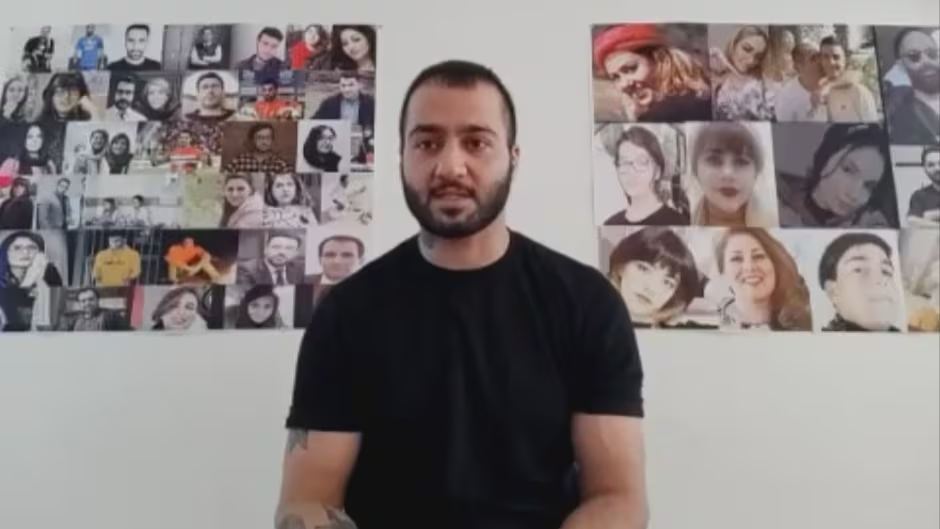The polarization of Iranian society is intensifying. What is unfolding is not a chaotic battle of competing factions but a deliberate convergence of reactionary forces. The IRGC and monarchist groups, though seemingly at odds in ideological rhetoric, are engaged in a joint effort to eliminate political dissidents. The IRGC carries out repression through direct security operations, while monarchists assume the role of ideological enforcers, engaging in a widespread propaganda campaign to discredit activists and political prisoners.
In recent days, this coordination has become increasingly apparent. Monarchists have escalated their attacks on political prisoners, launching a concerted defamation campaign against figures such as Toomaj Salehi, a rapper whose outspoken opposition to both the Islamic regime and the restoration of the Pahlavi monarchy has made him a target.
Toomaj is the rapper who was sentenced to death for supporting the Zhina uprising. However, due to the massive resistance of the Iranian people, not only was his death sentence overturned, but he was also temporarily released from prison. Toomaj is no longer just seen as an activist—he is referred to as “the Iranian nation” itself.
The campaign against him and others is not merely the product of isolated reactionary elements but part of a broader attempt to redefine the Iranian opposition along lines favorable to counter-revolutionary forces. The convergence of monarchists and the Islamic regime’s security forces signals a deeper historical process: the reconfiguration of reactionary alliances in the face of a revolutionary crisis.
The term “Monarchist-IRGC alliance” (سطلی-سپاهی) has emerged to describe this phenomenon—a counter-revolutionary bloc that seeks to hijack the struggle of the Iranian people. It is a bloc that does not oppose tyranny as such but merely seeks to redirect the mechanisms of repression toward its own ends. For both the IRGC and monarchists, the central enemy remains the autonomous revolutionary movement of workers, students, and marginalized communities. The question, then, is not whether the monarchists and the IRGC are formally aligned but rather why their objectives so clearly converge.
This development is not without historical precedent. Reactionary forces, when confronted with genuine revolutionary threats, have always been willing to set aside their differences to ensure the preservation of class domination. Just as the counter-revolutions of the past have relied on both military repression and ideological manipulation, the Iranian counter-revolution today operates on two fronts: the IRGC crushes dissent through brute force, while monarchists work to distort and neutralize revolutionary consciousness.
The struggle in Iran is not simply one of opposition to the Islamic regime but a fight against all forms of reaction, whether cloaked in the robes of clerical authority or the nostalgia of a fallen monarchy.










